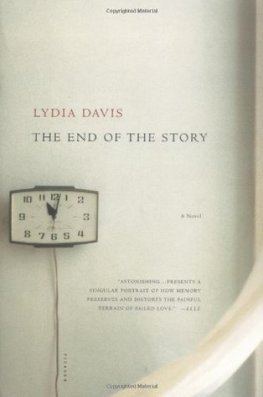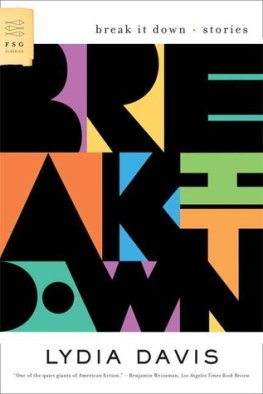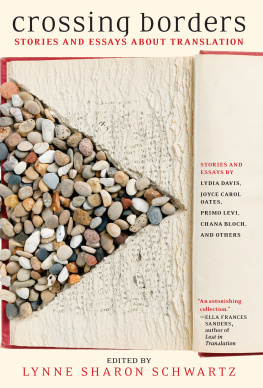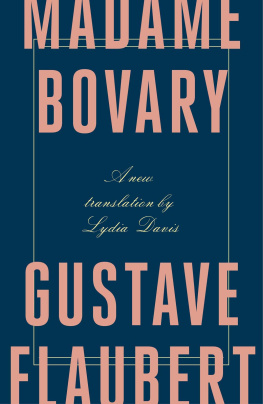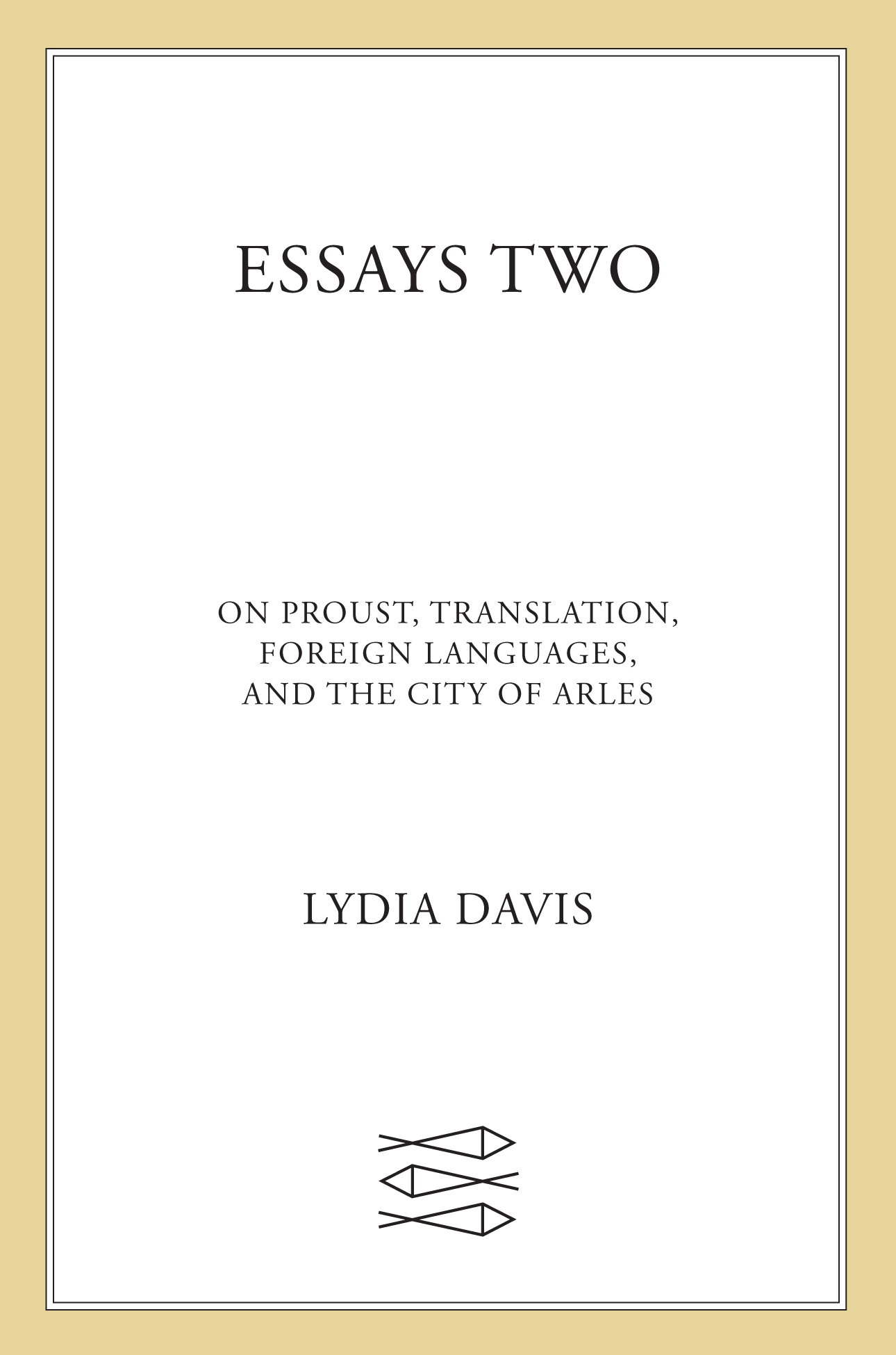Contents
Guide
Pagebreaks of the print version

The author and publisher have provided this e-book to you for your personal use only. You may not make this e-book publicly available in any way. Copyright infringement is against the law. If you believe the copy of this e-book you are reading infringes on the authors copyright, please notify the publisher at: us.macmillanusa.com/piracy.

The present volume of essays, my second, is a little more single-minded in its themes and subject matter than my first, Essays One , which concentrated on writers and writing but also included essays on the visual arts, memory, the turn of the millennium, and the Bible. Here, in this volume, another large part of my life is represented, in which professional and recreational activities tend to overlap: my translations and my interest in how foreign languages may be learned.
As I mention in a couple of the essays that follow, an important experience behind my lifelong preoccupation with other languages must have been my exposure to German at the age of seven in a first-grade classroom in Graz, Austria, where I had no choice but to learn the language. Im not sure that anyone talked much about the immersion method of language-learning in 1954, but it was effective: the other children were learning to read, and I, having been through first grade in the United States already, was learning to read again, this time in German. The language was all around me for most of a year, not only in the classroom, but as I played with friends, walked on the streets, rode the trolleys, went into stores, and passed through the corridors of the hotel where, for the first weeks, my family and I lived. There, on school mornings, I was expected to get up to the rattle of my own alarm clock and dress on my own. If I arrived downstairs in the dining room on time, I could have Schokolade mit Schlag (hot chocolate with whipped cream). If I was late, I had Schokolade ohne Schlag (without). I had constant practice in German, therefore, and even though I lost some of the language when I returned to the United States, the deeper sense of how a German sentence is constructed, as well as much of the elementary (childs) vocabulary, never went away.
This experience was also a childs thorough, lengthy introduction to the concept that communication can take other forms, with other sounds and orthographies. I theorize now that I must have gone through a few weeks, at least, of some frustration and bewilderment, as I listened to quite alien sounds coming, though so naturally, from my classmates mouths, accompanied by expressions on their faces that were, by contrast, completely recognizable to meof concentration, pleasure, challenge, surprise, and good humor. Then, this frustration must have been followed by gradual enlightenment as I became progressively more familiar with the meaning of what I was hearing, and eventually it must have implanted in me a hunger to repeat the experience, or at least a strong desire, at the sight of words that mean nothing to me, to find out what they mean.
Lessons in other foreign languages followed. In school back in the United States, I was introduced to French, then to Latin; later, in college, to Italian. But before the end of my time in high school, my parents went down to Argentina for half a year, my father to teach in the university at La Plata. I joined them after graduation and, living for a couple of months of the summer in Buenos Aires, began to learn SpanishI would try to converse during the day and then study a little grammar in the evenings. (This still seems to me one good way to approach a language: practice using it, and then, later, look up the rules behind what you have been trying to do.)
There is much more to say about exposure to foreign languages, but, over the years, perhaps compelled by the mental conditioning of that first experience in Graz, I have spent countless hours of countless days studying other languages, either trying to reawaken my rudimentary German, Latin, Spanish, and Italian, or learning new languages on my own, chiefly through reading. Three of the essays in this volume are accounts of these experiencesreturning to Spanish and learning Dutch and Norwegian. There is inevitably some overlap among the accounts, since I used more or less the same method for all three languages; I have trimmed back some of that overlap, but I have also deliberately left some.
What I have not yet written about is my struggle, one winter, to make my way sentence by sentence through Caesars The Gallic War , trying each sentence in Latin and then looking at the facing-page English of the nice little Loeb Classical Library edition. By the end of the book I had still not managed, to my disappointment, to acquire any more feel for reading a Latin sentence than I had in the beginning, frustrated most obviously by the unnatural word order. I am not done trying to gain a more comfortable reading knowledge of Latin. I have a little old tan-covered book for children, a 1937 update of an 1880 publication of easy stories in Latin ( Fabulae Faciles ). This is an obvious place to start. Then I will try the sermons of St. Caesarius, the bishop whom I mention in the last essay. His style of Latin, Ive been told, is deliberately rustic, with short, simple sentences and basic vocabulary, in part so as to reach his lis teners more effectively. And I doubt that I will be bored, since his sermons include stern warnings against some of the more colorful social behaviors of the people of sixth-century Arles.
One more note on language-learning: A friend once described to me his variation on my preferred learning-by-reading method. He said that in the morning, when his mind was fresh, he would read a portion of a given novel in the original language; then, at night, when he was tired, he would continue where he left off, but in the English translation. This seems like a more relaxing and entertaining method, and I am ready to try it.
Springing, of course, from my interest in foreign languages is my choice to work for most of my adult life as a translator, mainly from French but with later brief forays, for my own pleasurethe enjoyment of the challengeinto a list of other languages that has kept growing: German, Swedish, Norwegian, Spanish, Catalan, Dutch, Portuguese, Gascon Some of these adventures were inspired by a resolution that I have not yet completely fulfilled: to attempt to translate at least one short work from each of the languages into which my own stories have been translated, so as to make a gesture, at least, toward a cultural exchange. Since my life is not yet over, I have left open the question of what I will do about a language (Japanese, Turkish, Farsi) that is completely unrelated to any language I know.
The translation of the Gascon fairy tale, which I write about in this volume, was not a result of this resolution. I was simply intrigued by the near incomprehensibility of its language even for someone who knows French, has some acquaintance with Spanish, and has attempted to learn Provenal, all of which do help. The tale itself I enjoyed, once I began figuring out how to decipher it. The tone and style of the essay is colored by the fact that in its first version it was a piece of fiction (made almost entirely of nonfictional material) told in the querulous voice of a determinedly pedantic scholar trying to read the difficult language on a noisy train.


